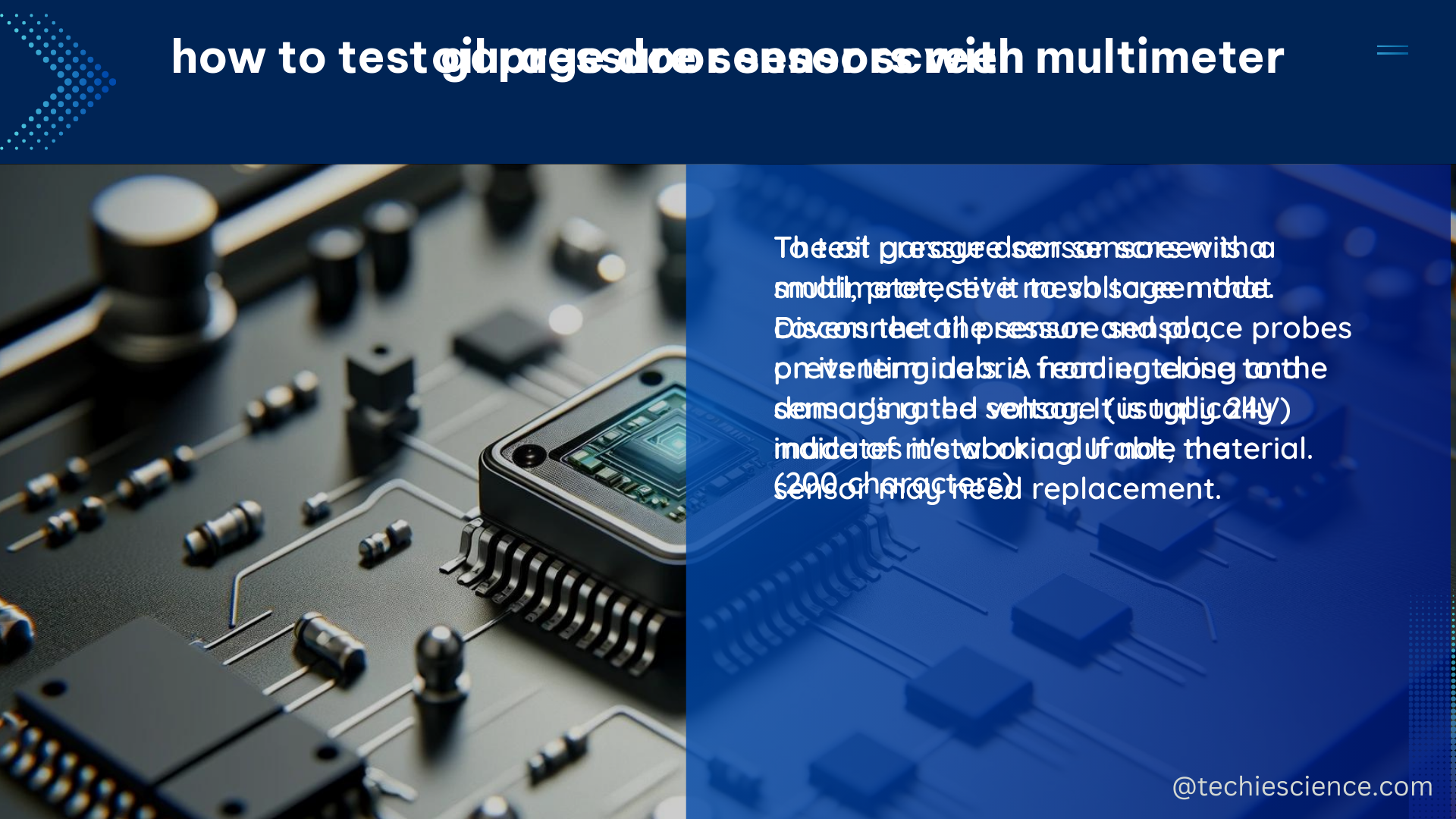The oil pressure sensor screen is a critical component in monitoring the engine’s oil pressure, ensuring the engine’s smooth operation and preventing damage. This comprehensive guide delves into the technical details of the oil pressure sensor screen, providing a deep understanding of its key parameters and specifications.
Understanding the Response Time of Oil Pressure Sensor Screen
The response time of the oil pressure sensor screen is a crucial parameter that determines how quickly the sensor can detect changes in oil pressure. Ideally, the sensor should have a fast response time, typically less than 10 milliseconds, to ensure that any sudden changes in pressure are detected promptly. This rapid response time is essential for triggering alarms or taking corrective actions before the engine sustains any damage.
Ensuring Accuracy with Oil Pressure Sensor Screen

The accuracy of the oil pressure sensor screen is another critical parameter that determines the sensor’s ability to provide reliable and accurate readings. The sensor should have a high degree of accuracy, typically within ±2% of the full-scale reading, to ensure that the readings are within the specified tolerance limits. This level of accuracy is crucial for making informed decisions about the engine’s oil pressure and maintaining optimal performance.
Measuring the Range of Oil Pressure Sensor Screen
The range of the oil pressure sensor screen is the difference between the maximum and minimum pressure values that the sensor can measure. The sensor should have a wide range, typically from 0 to 10,000 psi (pounds per square inch) or higher, depending on the engine’s requirements. This extensive range ensures that the sensor can accurately measure the entire spectrum of oil pressures that the engine may experience, from low-pressure conditions to high-pressure scenarios.
Enhancing Sensitivity with Oil Pressure Sensor Screen
The sensitivity of the oil pressure sensor screen is the minimum change in pressure that the sensor can detect. The sensor should have a high degree of sensitivity, typically less than 1 psi, to ensure that even small changes in pressure are detected. This enhanced sensitivity allows for more precise monitoring of the engine’s oil pressure, enabling early detection of any potential issues.
Ensuring Durability of Oil Pressure Sensor Screen
The durability of the oil pressure sensor screen is an essential parameter that determines the sensor’s ability to withstand the harsh conditions of the engine environment. The sensor should be designed to withstand high temperatures, vibrations, and other stresses that may be present in the engine environment. This durability is achieved through the use of high-quality materials and robust construction techniques, ensuring the sensor’s long-term reliability and performance.
Effective Data Management with Oil Pressure Sensor Screen
The oil pressure sensor screen should be capable of storing and transmitting the collected data to a central monitoring system. The data should be stored in a format that is compatible with the monitoring system and should be easily retrievable for analysis and reporting purposes. This data management capability allows for comprehensive monitoring and analysis of the engine’s oil pressure, enabling proactive maintenance and early detection of any potential issues.
Technical Specifications of Oil Pressure Sensor Screen
To summarize the key technical specifications of the oil pressure sensor screen:
| Specification | Typical Value |
|---|---|
| Response Time | Less than 10 milliseconds |
| Accuracy | ±2% of full-scale reading |
| Range | 0 to 10,000 psi or higher |
| Sensitivity | Less than 1 psi |
| Durability | High-quality materials and robust construction |
| Data Management | Compatibility with industry-standard communication protocols |
By understanding and implementing these technical specifications, you can ensure that the oil pressure sensor screen in your engine is providing reliable, accurate, and responsive monitoring of the oil pressure, ultimately contributing to the engine’s overall performance and longevity.
Reference:
- Oil Pressure Sensor Selection Guide
- Understanding Oil Pressure Sensors
- Oil Pressure Sensor Selection and Installation

The lambdageeks.com Core SME Team is a group of experienced subject matter experts from diverse scientific and technical fields including Physics, Chemistry, Technology,Electronics & Electrical Engineering, Automotive, Mechanical Engineering. Our team collaborates to create high-quality, well-researched articles on a wide range of science and technology topics for the lambdageeks.com website.
All Our Senior SME are having more than 7 Years of experience in the respective fields . They are either Working Industry Professionals or assocaited With different Universities. Refer Our Authors Page to get to know About our Core SMEs.